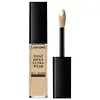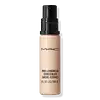What's inside
What's inside
 Key Ingredients
Key Ingredients

 Benefits
Benefits

 Concerns
Concerns

 Ingredients Side-by-side
Ingredients Side-by-side

Water
Skin ConditioningUndecane
EmollientDimethicone
EmollientGlycerin
HumectantTridecane
PerfumingPolyglyceryl-4 Isostearate
EmulsifyingPentylene Glycol
Skin ConditioningCetyl PEG/PPG-10/1 Dimethicone
EmulsifyingHexyl Laurate
EmollientMagnesium Sulfate
Disteardimonium Hectorite
StabilisingRosa Gallica Flower Extract
AstringentHelianthus Annuus Seed Oil
EmollientMoringa Oleifera Seed Extract
Skin ConditioningNymphaea Alba Flower Extract
Skin ConditioningIsobutane
Sorbitol
HumectantTrihydroxystearin
Skin ConditioningCellulose Gum
Emulsion StabilisingAluminum Hydroxide
EmollientDisodium Phosphate
BufferingDisodium Stearoyl Glutamate
CleansingPropanediol
SolventPropylene Glycol
HumectantCitric Acid
BufferingAcetylated Glycol Stearate
EmollientEthylhexylglycerin
Skin ConditioningAcrylonitrile/Methyl Methacrylate/Vinylidene Chloride Copolymer
Tocopherol
AntioxidantPentaerythrityl Tetra-Di-T-Butyl Hydroxyhydrocinnamate
AntioxidantPhenoxyethanol
PreservativeWater, Undecane, Dimethicone, Glycerin, Tridecane, Polyglyceryl-4 Isostearate, Pentylene Glycol, Cetyl PEG/PPG-10/1 Dimethicone, Hexyl Laurate, Magnesium Sulfate, Disteardimonium Hectorite, Rosa Gallica Flower Extract, Helianthus Annuus Seed Oil, Moringa Oleifera Seed Extract, Nymphaea Alba Flower Extract, Isobutane, Sorbitol, Trihydroxystearin, Cellulose Gum, Aluminum Hydroxide, Disodium Phosphate, Disodium Stearoyl Glutamate, Propanediol, Propylene Glycol, Citric Acid, Acetylated Glycol Stearate, Ethylhexylglycerin, Acrylonitrile/Methyl Methacrylate/Vinylidene Chloride Copolymer, Tocopherol, Pentaerythrityl Tetra-Di-T-Butyl Hydroxyhydrocinnamate, Phenoxyethanol
Cyclopentasiloxane
EmollientWater
Skin ConditioningTrimethylsiloxysilicate
EmollientButylene Glycol
HumectantSorbitan Sesquioleate
EmulsifyingPEG/PPG-18/18 Dimethicone
EmulsifyingTribehenin
EmollientMagnesium Sulfate
Phenyl Trimethicone
Skin ConditioningTocopheryl Acetate
AntioxidantSodium Hyaluronate
HumectantGlycerin
HumectantDimethicone
EmollientMethicone
EmollientEthylhexylglycerin
Skin ConditioningPentaerythrityl Tetra-Di-T-Butyl Hydroxyhydrocinnamate
AntioxidantLaureth-7
EmulsifyingXanthan Gum
EmulsifyingPhenoxyethanol
PreservativeChlorphenesin
AntimicrobialSorbic Acid
PreservativeCI 77891
Cosmetic ColorantIron Oxides
Cyclopentasiloxane, Water, Trimethylsiloxysilicate, Butylene Glycol, Sorbitan Sesquioleate, PEG/PPG-18/18 Dimethicone, Tribehenin, Magnesium Sulfate, Phenyl Trimethicone, Tocopheryl Acetate, Sodium Hyaluronate, Glycerin, Dimethicone, Methicone, Ethylhexylglycerin, Pentaerythrityl Tetra-Di-T-Butyl Hydroxyhydrocinnamate, Laureth-7, Xanthan Gum, Phenoxyethanol, Chlorphenesin, Sorbic Acid, CI 77891, Iron Oxides
 Reviews
Reviews

Ingredients Explained
These ingredients are found in both products.
Ingredients higher up in an ingredient list are typically present in a larger amount.
Dimethicone is a type of synthetic silicone created from natural materials such as quartz.
What it does:
Dimethicone comes in different viscosities:
Depending on the viscosity, dimethicone has different properties.
Ingredients lists don't always show which type is used, so we recommend reaching out to the brand if you have questions about the viscosity.
This ingredient is unlikely to cause irritation because it does not get absorbed into skin. However, people with silicone allergies should be careful about using this ingredient.
Note: Dimethicone may contribute to pilling. This is because it is not oil or water soluble, so pilling may occur when layered with products. When mixed with heavy oils in a formula, the outcome is also quite greasy.
Learn more about DimethiconeEthylhexylglycerin (we can't pronounce this either) is commonly used as a preservative and skin softener. It is derived from glyceryl.
You might see Ethylhexylglycerin often paired with other preservatives such as phenoxyethanol. Ethylhexylglycerin has been found to increase the effectiveness of these other preservatives.
Glycerin is already naturally found in your skin. It helps moisturize and protect your skin.
A study from 2016 found glycerin to be more effective as a humectant than AHAs and hyaluronic acid.
As a humectant, it helps the skin stay hydrated by pulling moisture to your skin. The low molecular weight of glycerin allows it to pull moisture into the deeper layers of your skin.
Hydrated skin improves your skin barrier; Your skin barrier helps protect against irritants and bacteria.
Glycerin has also been found to have antimicrobial and antiviral properties. Due to these properties, glycerin is often used in wound and burn treatments.
In cosmetics, glycerin is usually derived from plants such as soybean or palm. However, it can also be sourced from animals, such as tallow or animal fat.
This ingredient is organic, colorless, odorless, and non-toxic.
Glycerin is the name for this ingredient in American English. British English uses Glycerol/Glycerine.
Learn more about GlycerinMagnesium Sulfate is a salt. More specifically, it is an epsom salt, or the bath salt used to help relieve muscle aches.
Despite having ‘sulfate’ in the name, it isn’t a surfactant or cleansing agent like sodium lauryl sulfate. Unlike those sulfates, magnesium sulfate doesn’t have the same cleansing or foaming properties (it's simply a type of salt).
In cosmetics, Magnesium Sulfate is used to thicken a product or help dilute other solids. It is a non-reactive and non-irritating ingredient.
One study shows magnesium deficiency may lead to inflammation of the skin. Applying magnesium topically may help reduce inflammation.
You can find this ingredient in sea water or mineral deposits.
Learn more about Magnesium SulfatePentaerythrityl Tetra-Di-T-Butyl Hydroxyhydrocinnamate (long name, huh?) is a synthetic antioxidant.
It is used to help stabilize other antioxidants or prevent the color from changing in a product.
As an antioxidant, it helps fight free-radical molecules. Free-radical molecules are capable of damaging our cells and other genetic material. Thus, antioxidants may reduce the signs of aging.
This ingredient is oil-soluble.
Learn more about Pentaerythrityl Tetra-Di-T-Butyl HydroxyhydrocinnamatePhenoxyethanol is a preservative that has germicide, antimicrobial, and aromatic properties. Studies show that phenoxyethanol can prevent microbial growth. By itself, it has a scent that is similar to that of a rose.
It's often used in formulations along with Caprylyl Glycol to preserve the shelf life of products.
Water. It's the most common cosmetic ingredient of all. You'll usually see it at the top of ingredient lists, meaning that it makes up the largest part of the product.
So why is it so popular? Water most often acts as a solvent - this means that it helps dissolve other ingredients into the formulation.
You'll also recognize water as that liquid we all need to stay alive. If you see this, drink a glass of water. Stay hydrated!
Learn more about Water